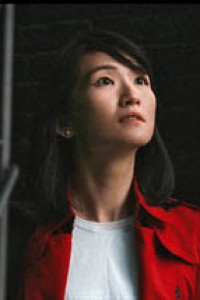Spotlight On: Brooks Peck, MoPOP Curator
Brooks Peck is an author, museum curator, and journalist. In 1996 he co-founded Science Fiction Weekly, the first professional website devoted to SF, and in time became editor-in-chief. He joined the Museum of Pop Culture (AKA MoPOP, formerly known as the EMP Museum) in 2004 when the museum established its first science fiction galleries. There he has curated exhibitions on the Search for Extraterrestrial Intelligence, Battlestar Galactica, and Avatar among others. His most recent show is ‘‘Star Trek: Exploring New Worlds’’, which is currently on view. He co-authored two creature features for the Syfy Channel, and his short story ‘‘With Folded RAM’’ recently appeared in Asimov’s.
Tell us about MoPOP and how SF/F/H are represented there. What is the mission statement or guiding philosophy? We started as a popular music museum, but have evolved a great deal since opening in 2000. I joined the museum in 2004 when we opened our first science fiction galleries. In the following years we added fantasy, horror, and have made forays into everything from wearable art to Lego to indie video games. So today we are firmly and happily a museum of popular culture. In particular we like to tell the stories of pop culture phenomena that started on the outside and stormed the mainstream. Star Trek, for example, can be seen as an effort by Gene Roddenberry to upend the status quo of science fiction on television and use the genre to sneak some very difficult, socially relevant themes and ideas past the censors.
How did you become involved with the museum, and what does your job as curator entail?
I started out producing articles for the museum’s website, having come from the entertainment journalism world. For about 10 years prior I worked for the Syfy Channel writing for their magazine and websites. So I came into the job with a broad knowledge of SF/F/H in lots of mediums. Soon after I was hired, though, the museum dropped its plans for extensive web content, and suddenly I had very little to do. I began helping out with exhibits. My very first display was a feature area on The Rocketeer, about ten square feet. Next I did a 14-foot-long wall about SETI. My first full-blown exhibition was called ‘‘Spaced Out: The Final Frontier in Album Covers’’, a display of 125 LP covers from the ‘50s and ‘60s with space and science fiction themes. It was super groovy.
Curating exhibitions involves a lot of writing, but also scenic design, planning how to display objects, a little filmmaking. Being a curator is akin to being a writer-director of a film. You work with a creative team, and the various team members have their specialized tasks such as graphic design, construction, etc. Your job is to maintain the overall vision of the exhibition. The curator is also like Kermit on The Muppet Show, trying to be calm in a storm of chaos.
Curating science fiction exhibitions in particular requires a great deal of what I call bridging and bonding. There are two main audiences for a given SF exhibition: fans and general folks. In any exhibition I want to show fans a deep appreciation for and understanding of this thing they love very much, and I want to validate their fandom. That’s the bonding. At the same time I have to remember that most of our visitors are not fans, or not yet. I need to introduce this potentially strange and exotic topic to them and show them why it’s cool and how it relates to them. That’s bridging. These two goals can be in opposition. Too much insider jargon will alienate the general audience, but treating the topic in an overly simplistic way could alienate the fans.
What are your favorite parts of the job and/or the museum?
It’s a tiny part, but those rare moments when I unearth (not literally) some rare or forgotten item, that’s wonderful. I receive a lot of e-mails and calls from people who tell me they’ve got something really special, and 99 times out of 100 what they have is cool, but… maybe not so special. Every once in a while, though, yeah, a genuine find comes along: a forgotten manuscript, an early Hugo trophy, or heck, an entire art archive. Those are great days.
According to popular depictions, that’s what curators do all day every day. Would that it were so. (Actually, according to many movies, museum curators work late at night in very dim galleries. Their last words are often, ‘‘Is someone there?’’)
Tell us about your past few SF/F/H exhibits, and what is up next?
In May I opened ‘‘Star Trek: Exploring New Worlds’’, which we created to celebrate Star Trek’s 50th anniversary. Star Trek was one of my earliest science fiction experiences, and my love of SF has driven my work and career, so I loved coming full circle on that. And, of course, loved looking at things like communicators and tricorders and tribbles up close. Before you ask, no, I haven’t sat in Captain Kirk’s chair. Prior to ‘‘Trek’’ I curated ‘‘Infinite Worlds of Science Fiction’’, the latest version of our permanent SF gallery. For that I took a kind of futuristic cabinet of curiosities approach and decorated the gallery as if it were a derelict, alien starship.
Up next, we’re rolling out a brand new Science Fiction & Fantasy Hall of Fame. The new gallery is the biggest amount of space we’ve ever devoted to the Hall of Fame, and will have a great location right off the lobby. The new gallery opens in March. We are also opening the nomination and induction process up to the public at large, not just museum members, and I encourage Locus readers to get involved. You! Do it!
You’ve had some forays into publishing and are also a writer. Tell us a little about that. Is there anything else you’d like our readers to know about you or your work?
What’s that saying? 90% of genre readers are writers, and the other 10% are liars. I’ve always written science fiction and fantasy, and attended Clarion during college. Before I joined the museum, I published short stories with a certain regularity. Work cut into my output drastically, although I did co-write two creature features for Syfy: Rage of the Yeti and Zombie Apocalypse. Last fall Asimov’s picked up my story ‘‘With Folded RAM’’, an AI tale that is meant to be a commentary on typical depictions of sentient software as heartless murderbots. These days I’m working on a series of fantasy stories that I describe as P.G. Wodehouse with magic. For a long time I wanted to be a writer more than I wanted to write, you know? Lately, though, that’s changed, and I enjoy the process so much more.







